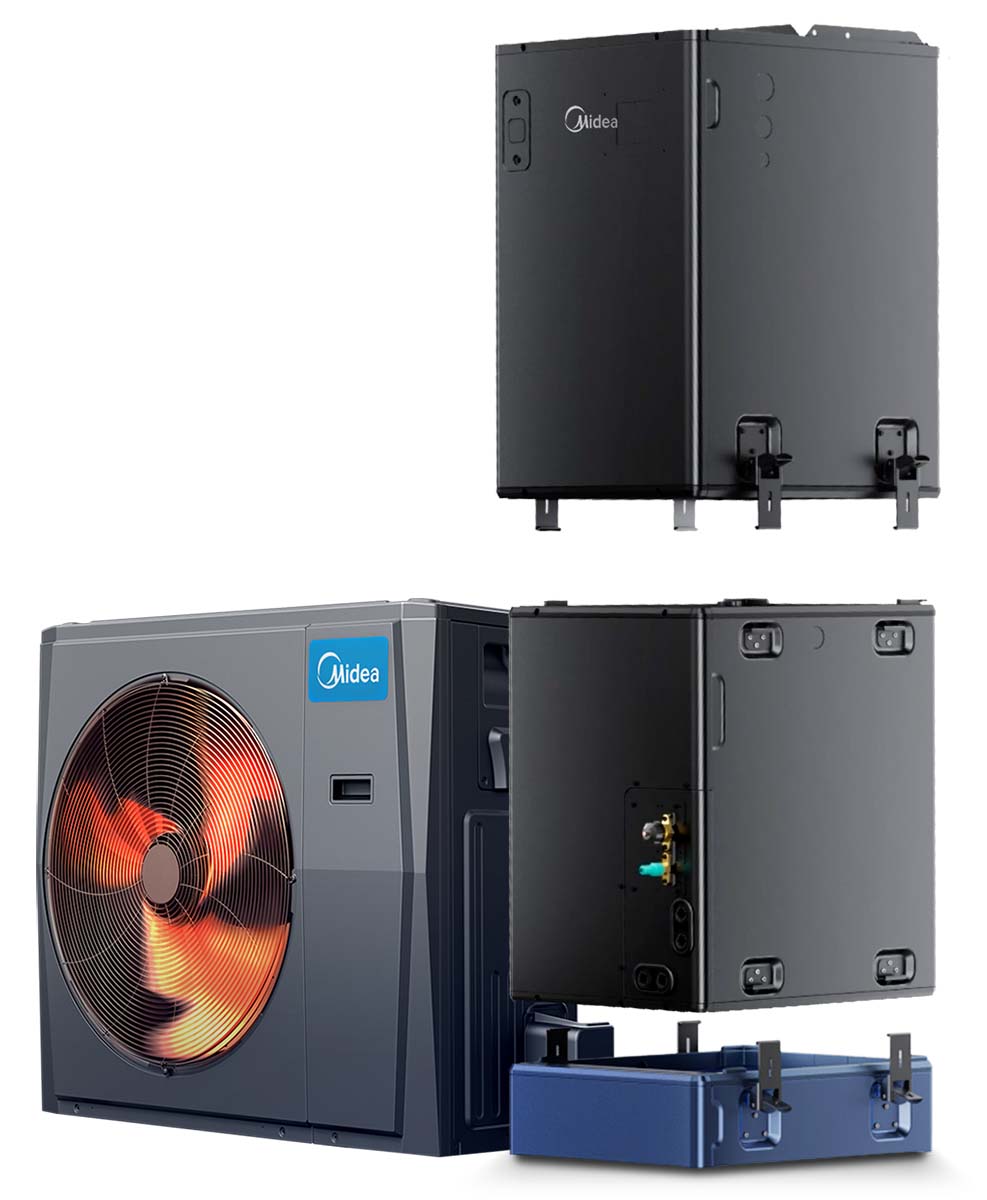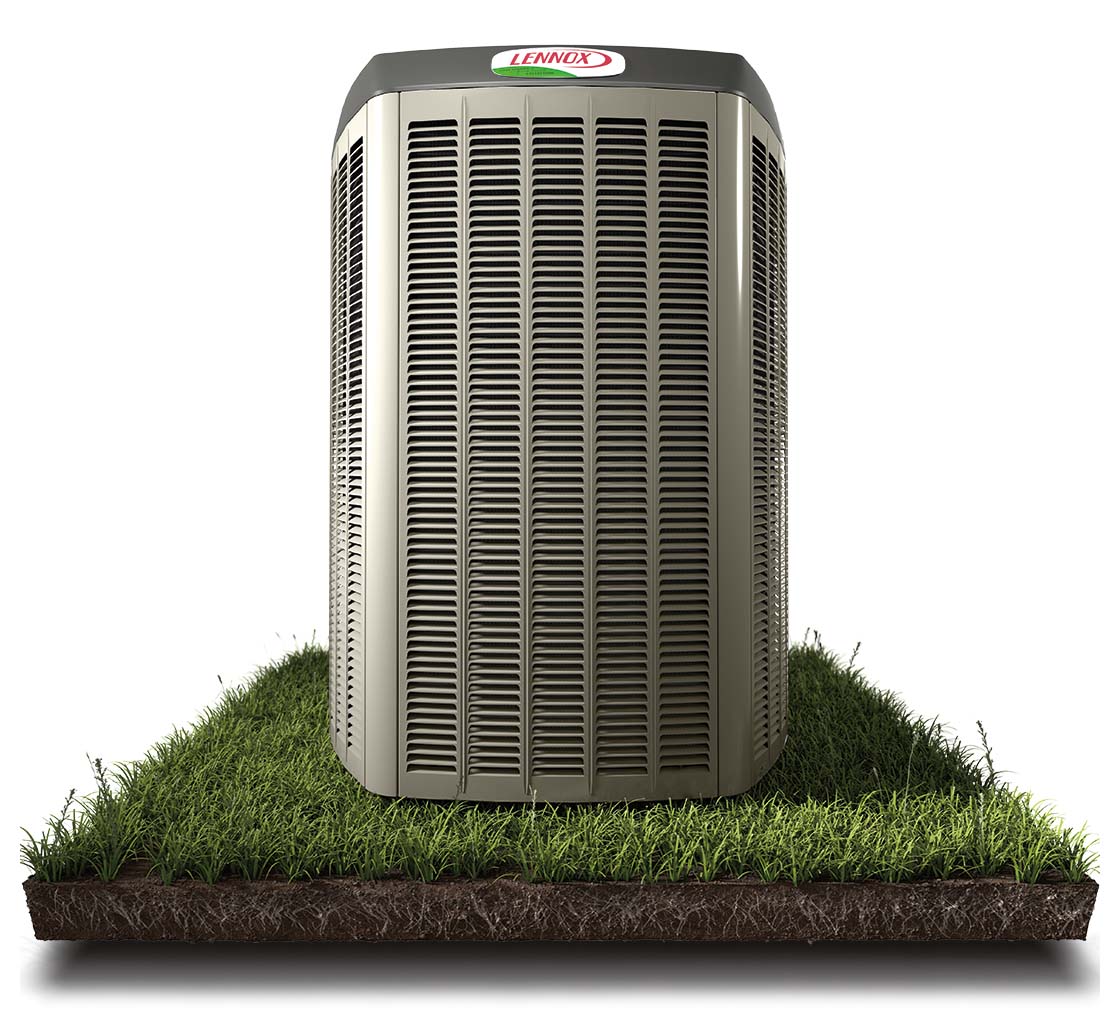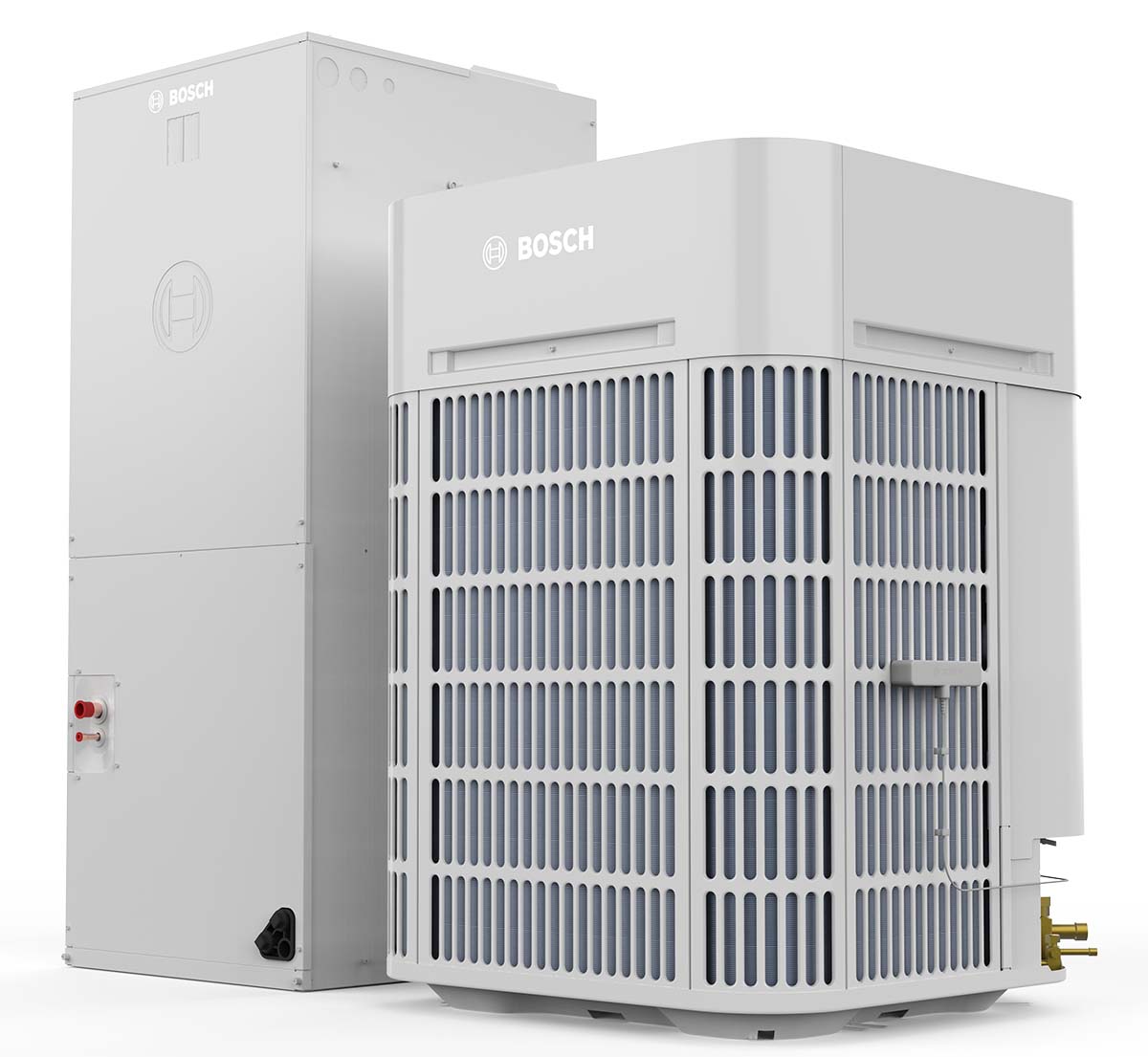✕
– Justin Huntington
senior product marketing manager
Lennox
Offering consistent comfort, quiet operation, precise-temperature heating and cooling, and — compared to their single- and dual-stage cousins — increased energy efficiency, inverter heat pumps are gaining more traction among HVAC manufacturers.
An inverter heat pump features an inverter compressor, also called a variable-speed compressor, that runs at the exact speed necessary for maintaining the temperature set for the conditioned space. That results in lower noise levels, as well as lower utility costs, compared to heat pumps with compressors that run at just one or two speeds and thus have to cycle on and off more often, according to manufacturers.
Inverter heat pumps run longer but at lower speeds. Comfort, IAQ, and humidity control are improved as well, manufacturers say. They are more expensive than non-inverter compressors, but experts say that difference can be made up through energy savings. The technology now dominates the heat pump market in many parts of the world, including in Europe and Japan.
“Inverter technology brings greater electrical efficiency when cooling or heating a home, allowing homeowners to save on energy bills,” said Justin Huntington, senior product marketing manager in the residential HVAC division at Lennox. “While most heat pumps are single stage, meaning they’re either on or off, variable-capacity heat pumps are able to heat or cool more precisely by adjusting in tiny increments, perfectly matching energy use with comfort.”
The inverter compressor “uses less energy, as it can better moderate temperatures, so it is only using the amount of energy needed to maintain the set temperature, versus overshooting and needing the fan or compressor to kick on more frequently,” said Dustin Gregoire, director of HVAC sales and key accounts at Bosch Home Comfort USA. “The more a fan or compressor needs to run, the louder the fan and compression system will be for homeowners.”
Inverter heat pumps, according to several manufacturers, are most effective and efficient when paired with fully communicating thermostats rather than traditional 24V thermostats.
“Homeowners today who use a communicating thermostat tend to have better energy savings and comfort, as it helps the system modulate its output efficiently,” Gregoire said.
Japan-based Daikin has been making and selling inverter heat pumps for about 40 years, and entered the U.S. market in 2004, said Lee Smith, vice president of market and application strategy at Daikin Comfort Technologies USA.
More than 30 million Daikin inverter heat pumps are installed around the globe, he said.
“We are now committed to transforming the unitary ducted market from traditional on/off compressor technology to inverter, and in recent years have launched innovative solutions,” Smith said.
Daikin’s Atmosphera heat pump, for a single-zone ductless system, has a SEER2 rating of up to 27.4; Smith said the Atmosphera’s efficiency is 18% greater than that of the model it replaced. Daikin also has models that can operate at 100% cooling capacity with an outdoor temperature of up to 115°F and can also provide heat at 100% capacity in an ambient temperature as low as 5°F — and still provide partial heat down to -13°F, Smith said.

MODULAR DESIGN: A Midea EVOX G3 heat pump, pictured with a Midea air-handling unit. The system has a modular design — the company calls it Block N Lock — that makes for ease of installation. (Courtesy of Midea America Corp.)
Midea entered the inverter heat pump market in 2009. Its newest residential inverter model, the EVOX G3, has a SEER2 rating of up to 19 and can operate at 100% of heating capacity in an outdoor temperature of -13°F, and at partial capacity down to -22°F, said David Rames, a senior project manager at Midea America Corp. The EVOX G3 is versatile, designed for both ducted and ducted systems, Rames said.
“The systems are reliable and require minimal ongoing maintenance, making them a cost-effective and marketable option for HVAC professionals,” he said.
Lennox introduced its first inverter heat pump in 2013. “Today, a considerable portion of our heat pumps sold are inverter-driven,” Huntington said.

MADE FOR COLD CLIMATES: The Lennox SL25XPV heat pump for ducted systems can find heat in outdoor temperatures as low as -15°F. (Courtesy of Lennox)

NEW MODEL: Bosch’s IDS Ultra Cold Climate Heat Pump System is scheduled to be released later this year. The IDS Ultra will provide 100% heating in temperatures as low as 5°F, and still provide partial heat in temperatures as low as -13°F. (Courtesy of Bosch Home Comfort USA)
The newest residential inverter model from Lennox is the SL25XPV heat pump for ducted systems, which boasts a SEER2 of up to 23 and can find heat at outdoor temperatures of as low as -15°F, said Huntington.
“Greater efficiency, humidity, and zoning control are benefits that technicians are able to easily relay to homeowners,” Huntington said. “In addition, variable-capacity heat pumps often have air quality benefits due to the fan continually, slowly, circulating and trapping contaminants in the filter, a perk that appeals to many customers.”
Bosch Home Comfort launched its first inverter heat pump in 2016, and planning to release a new line, the IDS Ultra Cold Climate Heat Pump System, later this year. The new IDS Ultra will operate at 100% in temperatures as low as 5°F, and still provide partial heat with outdoor temperatures as low as -13°F, Gregoire said.
The Bosch IDS system — the initials stand for inverter ducted split — has a nonproprietary design that makes it simpler for installers, and thus less costly for homeowners, Gregoire said.
“Our physical units are smaller — and in some cases, lighter — than most models available on the market today, and a majority of the time they can be hooked up to existing line sets,” Gregoire said.
Whether you require installation, repair, or maintenance, our technicians will assist you with top-quality service at any time of the day or night. Take comfort in knowing your indoor air quality is the best it can be with MOE heating & cooling services Ontario's solution for heating, air conditioning, and ventilation that’s cooler than the rest.
Contact us to schedule a visit. Our qualified team of technicians, are always ready to help you and guide you for heating and cooling issues. Weather you want to replace an old furnace or install a brand new air conditioner, we are here to help you. Our main office is at Kitchener but we can service most of Ontario's cities
Source link



Add Comment